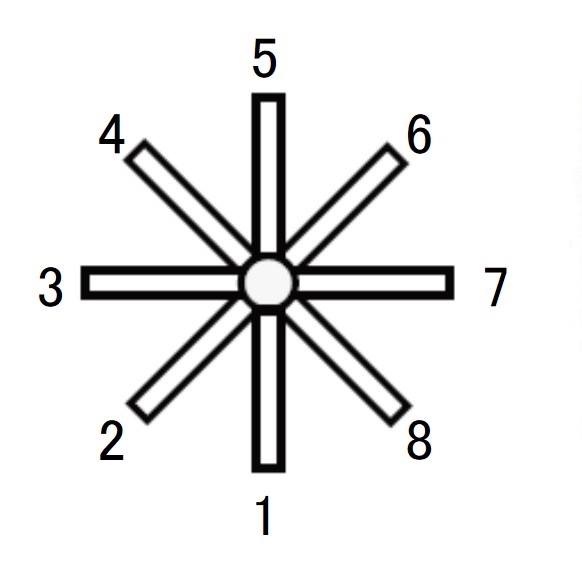Neurons necessary for spatial working memory identified in rats Multiyear data analysis finds dentate-hippocampal neuronal circuits essential


Hippocampal neuronal activity was recorded from rats performing a spatial working memory task. A reward is placed on the ends of arms of the pictured eight-arm radial maze. The rats are rewarded after successfully running throughout the maze.
© 2019 Takuya Sasaki.
University of Tokyo researchers have demonstrated that both the hippocampus and the upstream brain area, the dentate gyrus, which is located in the cortex, are necessary to solve a spatial working memory task in which rats had to make multiple choices.
In nature, animals temporally retain so-called working memory – short-term memory to effectively perform current tasks. This memory enables animals to carry out a series of multiple procedures. In previous studies, scientists identified several neuronal mechanisms underlying working memory in the brain, including neuronal activity in the frontal cortex and the basal ganglia. However, how the hippocampal network and neighboring brain regions are involved in processing working memory remained largely unknown.
To address this issue, the research group led by Assistant Professor Takuya Sasaki in the Graduate School of Pharmaceutical Sciences at the University of Tokyo tested adult rats’ ability to remember how to move through a maze to find a reward. Researchers made a lesion in the dentate gyrus and confirmed that after doing so, the rats could not perform the correct task to obtain rewards in an eight-arm radial maze. The group examined the detailed neuronal mechanism by monitoring spike patterns of dozens of neurons in the dentate gyrus and the hippocampus within the rats’ brains using multiple electrode arrays. Analyses of electrical neuronal signals revealed that the spike patterns of neuronal populations arising from interactions between the hippocampal network and the dentate network are crucial for correctly performing the spatial working memory task. Notably, the research team found that neuronal spike patterns encoding future possible events were retained until the events were completed. This means that the hippocampal circuit contains groups of neurons related to events that the animal needs to memorize, and that these cell groups can flexibly adjust their activity levels to the requirements of different tasks and environments.
The study demonstrates a novel role of the hippocampus in working memory. This insight will help us understand the neuronal mechanisms to efficiently and accurately complete a series of tasks when external events change continuously.
“In general, experiments, rather than analysis, are the most time-consuming part of a neurophysiological study. However, we spent more than three years analyzing the data we collected during the experiments of this study,” says Sasaki. He continues, “Our team believes that in the future, more and more neurophysiology studies will use this model, where a crucial point is extracted from a huge data set containing many dimensions.”
Papers
Takuya Sasaki, Veronica C Piatti, Hwaun Ernie, Siavash Ahmadi, Stefan Leutgeb, Jill K Leutgeb, "Dentate network activity is necessary for spatial working memory by supporting CA3 sharp-wave ripple generation and prospective firing of CA3 neurons.," Nature Neuroscience: January 16, 2018, doi:10.1038/s41593-017-0061-5.
Link (Publication )
)
Related links
- Graduate School of Pharmaceutical Sciences

- Laboratory of Chemical Pharmacology, Department of Pharmacy, Graduate School of Pharmaceutical Sciences

- Takuya Sasaki’s homepage






